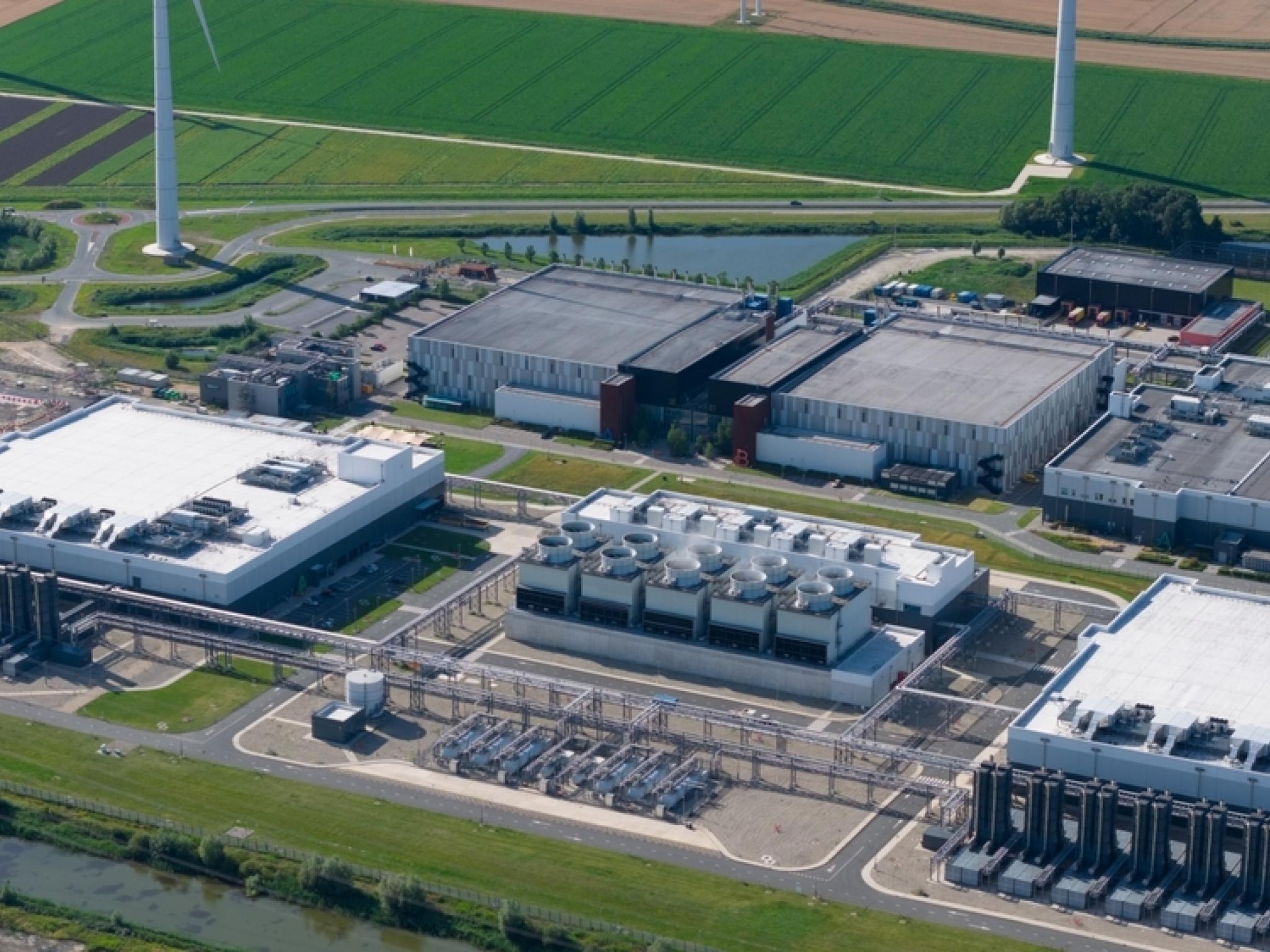4 Real Opportunities Hiding Behind The AI Hype
Author: Tim Melvin | November 10, 2025 12:19pm
Every few years, Wall Street discovers a shiny object and suddenly half the Internet becomes overnight experts in whatever the new talking point might be.
We saw it with crypto. We saw it with weed. We saw it with 3D printing.
The latest round of instant expertise is the breathless chatter about artificial intelligence (AI). Go online any day of the week and you’ll find folks with impeccable confidence explaining GPUs, inference, multimodal architectures, quantum scaling, and transformer models as if they personally built them in their garage over the weekend.
Chris Capre's Plan for a Market on the Edge
Volatility is building as traders brace for the next breakout. On Wednesday, November 12 at 6 PM ET, former hedge fund trader Chris Capre goes live to share his short-term trading framework—including how he's using bull call and bear put spreads to target quick double-digit returns, and what sectors like financials and copper are flashing as top setups right now. Watch the Strategy Live
That is all fine. Most hype cycles follow the same script. Speculators chase immediate gratification and the media amplifies the loudest voices.
The real money, as always, gets made quietly in the background by the investors who understand that every period of technological exuberance has a set of boring but indispensable picks and shovels.
The same is true of this AI hype.
The newest piece of work that drives this point home comes from KKR. Say what you will about big private-equity shops, but when they talk about infrastructure, you should probably listen. The team there laid out one of the most sober, rational, data-driven assessments of what is happening beneath all the AI hysteria.
Their conclusion is simple. There may be bubbles forming around GPUs, training models, or software valuations, but the infrastructure required to make all of this run is not a bubble. It is a multi-trillion-dollar buildout that will compound for decades.
That is where the real opportunity sits.
Scale Of The Buildout
KKR (NYSE:KKR) points out that the data center boom is not a fringe side project. The capital committed to AI-related infrastructure is already at roughly 5% of U.S. GDP and growing at high single- to low double-digit rates. Global estimates put the total data-center capex need approaching several trillion dollars by the end of the decade.
This is the kind of expansion that historically accompanies industrial revolutions. We saw it during the railroad era. We saw it again in the great electrification wave. We saw it with fiber. The difference this time is that the bottleneck is not capital. There is plenty of capital. The bottleneck is power, land, transmission, connectivity, and long-lead infrastructure required to keep AI from hitting a physical wall.
That makes this cycle fundamentally different from the late-90s telecom bubble. Back then, people built capacity first and prayed the demand would show up. Today, the demand is here, growing every quarter, and the constraint is the world's ability to deliver enough electricity, cooling, land entitlements, fiber backhaul, and high-density infrastructure to keep up.
AI is not a vertical trend. It is a horizontal layer reshaping workloads across every industry. That means the demand underneath it is broader, deeper, and more durable than any single-application boom we have seen before.
Hard Assets Beat Hype
KKR also makes an important point. The companies renting GPUs, the opportunistic server-farm middlemen, the outfits promising cheap AI capacity with no tangible assets behind them—those are the ones most likely to burn investors. The winners are the folks who control the hardest things to replace:
- Power
- Land
- Grid connections
- Entitlements
- Dense fiber access
- Execution capability
Those five ingredients form the moat around the entire ecosystem. Anyone who controls them has leverage. Anyone lacking them is taking a risk.
This is why KKR draws a bright line between platforms with scale, land banks, expansion rights, secured power, and multi-tenant flexibility versus the speculative single-tenant or single-site operations that live or die depending on one contract renewal. They go so far as to say that stabilized platforms with strong attributes can exit at premium valuations to core and core-plus buyers, while assets lacking those attributes should trade at a discount.
They are right.
The Power Problem
No one likes talking about it, but the single greatest constraint on AI's growth is power. Data centers are evolving into industrial power consumers. The new AI-optimized campuses require massive megawatt footprints. The grid is already strained throughout much of the country. Add electrification of transport, heating, manufacturing and reshoring, and you begin to understand why utility economists talk about 20-year load forecasts that look like the 1950s on fast-forward.
This is not a headwind. It is the investment case.
Where power is scarce, contracts are more valuable. Where land is entitled and shovel-ready, scarcity premiums emerge. Where the grid must be rebuilt, someone will be paid to rebuild it.
The opportunity is not theoretical. It is right in front of us.
Where The Real Money Will Be Made
This brings us to the investable takeaway. Whenever we hit a period when technology outpaces infrastructure, the path for value investors is simple. Own the folks who build it. Own the folks who power it. Own the folks who control the land. Own the folks who rebuild the grid.
To narrow it down, here are four publicly traded U.S. companies—one in each critical segment—that sit directly in the path of the AI buildout and stand to benefit from the long, grinding, compounding wave of capital that is coming.
1. The Data-Center Builder: Digital Realty Trust
Digital Realty Trust (NYSE:DLR) is one of the few true global data-center platforms with scale, land, connectivity, enterprise reach, and hyperscale relationships. While everyone else is scrambling to secure power and land, Digital already controls enough of both to build, expand, and densify. Their facilities host the world’s highest-demand AI tenants, and they have the balance sheet to continue expanding.
In simple terms, they build the places where AI lives. Not on speculation. Not with risky tenants. With long-term contractual offtake from the strongest customers on the planet.
2. The Power Provider: NRG Energy
If power is the bottleneck, power companies with scale and repositioning flexibility become enormously valuable. NRG Energy (NYSE:NRG) is not a sleepy old utility. They have been buying gas-fired generation, focusing on dispatchable capacity, and positioning themselves for the surge in large-load customers.
When giant data-center campuses need firm power—and they will—NRG stands to be one of the beneficiaries. They generate the electricity that keeps AI running.
3. The Land And Entitlement Owner: Prologis
Most investors still think of Prologis (NYSE:PLD) as a logistics REIT. They are that—but they are also becoming one of the largest landholders with zoning, power access, and infrastructure adjacency ideal for data-center development. They already control huge megawatt-ready sites. They already work with hyperscalers. They already own the kind of land that is getting harder to assemble every year.
The advantage is simple. While other companies race to find suitable parcels, Prologis already has them.
4. The Grid Rebuilder: Quanta Services
If AI is going to scale, the U.S. is going to need the largest rebuild of transmission and distribution infrastructure in modern history. Substations must be upgraded. High-voltage lines must be added. Urban grids must be reinforced. Rural capacity must be expanded.
Quanta Services (NYSE:PWR) is the company rebuilding the American grid. They do the linework, transmission upgrades, the substation construction, and the buried infrastructure that connects everything together. Their backlog is enormous and still growing. This is the purest grid-expansion play in the country.
The Big Picture
Boil the whole thesis down and it becomes clear. The AI revolution is not going to be defined by the chatbots, the training runs, or the next flashy application. It’s going to be defined by the quiet, steady buildout of the physical foundation beneath it. That is where the capital is flowing. That is where the margins are durable. That is where the scarcity lies.
The companies that build the data centers, power them, house them, and connect them are the ones who will still be compounding ten years from now, when today's hype stocks have been forgotten.
The best investors in history understood that fortunes are made not by chasing excitement but by owning the indispensable assets the world cannot operate without.
This entire AI cycle is shaping up to be another example of that truth.
Editorial content from our expert contributors is intended to be information for the general public and not individualized investment advice. Editors/contributors are presenting their individual opinions and strategies, which are neither expressly nor impliedly approved or endorsed by Benzinga.
Photo: Shutterstock
Posted In: DLR KKR NRG PLD PWR





